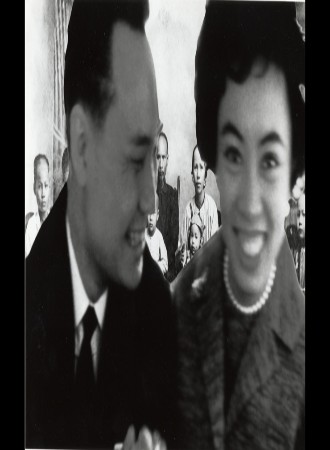
These Shoes Weren't Made For Walking 1995
Distributed by Cinema Guild, 1697 Broadway, Suite 506, New York, NY 10019-5904; 800-723-5522
Produced by Ganymedia
Directed by Paul Lee
VHS, color, 27 min.
College - Adult
Asian Studies
Date Entered: 11/09/2018
Reviewed by Carol Lelonek, Health Sciences Library, SUNY BuffaloThese Shoes Weren't Made For Walking is a film dealing with Chinese women from the mid 1800's through 1996. It focuses on the women of a single Chinese family. The soundtrack is clear and English subtitles are used throughout portions of the video. Imaging is vibrant and focused.
The title intimates that the main focus is would be on the Chinese practice of foot-binding, however this is not entirely the case. The first main character of the film is the grandmother who talks about her own mother and her experience with having bound feet. From that description onward, no other family member had bound feet nor was there any reference to it. Although it was not clear, the main theme of the film appeared to deal with the struggle of Chinese women. These struggles included the hardships of child rearing among widowed women, and discriminatory issues on families who emigrated to Canada.
According to the video, Chinese women's feet were bound around age 2-3 when the foot was approximately 3" in length. It was a painful process and children had to be physically carried on their maid servants backs to get from once place to another. Silk bandages are wrapped around the foot. The toes were pointed upward during the wrappings until they eventually folded over the top of the foot. Women were rendered useless due to the fact that they could not work, walk, or function in society. It took them twice as long to walk from one place to the next. It was stated that foot-binding was only done by the wealthy because the poor had to work. This is not entirely true. The custom spread from the elite to the peasantry, and tiny feet became the measure of feminine beauty to the Chinese. Some women unbound their feet to go to work and then re-bound them for social occasions. Some mother's bound their daughter's feet and when they became too painful, the mother would sit on them in the hope that the pressure would help ease the pain.
Again, the discussion of foot-binding only took place in the initial 3-5 minutes of the video. It is so brief that it isn't enough to whet the interest to learn about one of the most unique practices among women in history. The remainder of the video was mildly entertaining but not very informative. The focus shifted from foot-binding or "walking shoes" to the plight of a single family who left China for Canada. They experienced hardships and were not accepted by many. In this respect the video is correct in that there were prejudices toward Chinese immigrants, but the same holds true for many other races.
If the video had used more examples of foot-binding or contained more of a historical background, it could serve as an educational tool. Conversely, if the focus was on the plight of Chinese women, this is not made clear and the viewer is misled. Therefore, the audience most suitable would be high school level. It is too elementary for a college level film, and because it shows an actual picture of bound feet it should not be shown to young children. It could serve as an illustration of life in a different society.